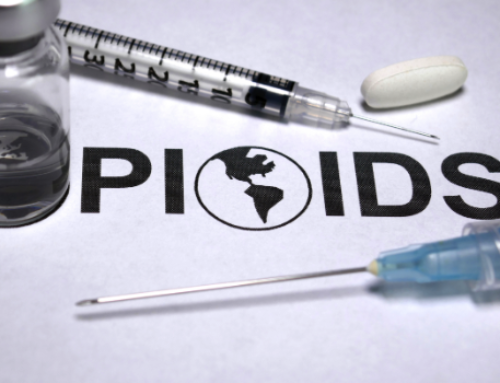Opioid abuse is an epidemic in our country. While narcotics like heroin and oxycodone have been around for decades, a newer opioid is on the rise. This drug is called fentanyl.
Due to its extreme potency, fentanyl has exacerbated the opioid crisis. Fentanyl is 50 to 100 times stronger than morphine. As a result, it’s very easy to overdose on.
So how can you spot the signs of a fentanyl overdose? And what is the best treatment? Keep reading to find out.
What is Fentanyl?
Fentanyl is a synthetic opioid. It’s usually prescribed after surgeries to treat severe pain. You can spot the drug by the following prescription names:
- Actiq®
- Duragesic®
- Sublimaze®
Even though fentanyl can be prescribed by a doctor, it’s still prone to abuse. In fact, 21% to 29% of people with opioid prescriptions misuse them. Around 10% of these patients end up developing a full-blown opioid addiction!
Fentanyl is also widespread in the illicit drug market. It’s often used as a “cutting agent” in other recreational drugs, like cocaine and heroin. As a result, many people don’t even realize that they’re ingesting fentanyl, making it all too easy for them to unknowingly take a life-threatening dose.
What Are the Effects of Fentanyl?
Fentanyl produces many effects, including:
- Relaxation
- Euphoria
- Pain relief
It can wash away physical and emotional pain temporarily, giving many people a much-needed reprieve. However, fentanyl also comes with the following negative effects:
- Drowsiness
- Dizziness
- Confusion
- Nausea
- Vomiting
- Slowed breathing
But most notably, fentanyl can cause life-threatening overdoses.
How Does Fentanyl Produce These Effects?
Fentanyl binds to a person’s opioid receptors, which are located in the brain. These receptors regulate pain, pleasure, and other emotions. If someone uses fentanyl regularly, their brain stops producing as many natural opioids.
Without those natural opioids, individuals who use fentanyl regularly will become more and more reliant on the drug. Even if someone takes fentanyl as prescribed by their doctor, they can develop a strong dependency.
If someone with a fentanyl dependence stops taking the substance, they may experience distressing withdrawal symptoms, such as:
- Sleeping issues
- Diarrhea and vomiting
- Cold flashes
- Muscle and bone pain
- Restless leg syndrome
- Severe fentanyl cravings
Fentanyl Overdose Statistics
Due to its addictive qualities and powerful potency, fentanyl is responsible for a large—and increasing—number of overdoses. Here are some alarming statistics about fentanyl overdoses:
- Fentanyl is the leading cause of drug overdose death in the United States.
- Back in 2010, just 14.3% of opioid-related overdoses involved fentanyl. As of 2017, this number has skyrocketed to 59%!
- In 2017 alone, fentanyl-related deaths increased by 45%.
As you can see, fentanyl presents a high risk for overdose and these tragedies are on the rise. Even users who take fentanyl from their doctors can find themselves addicted and at risk of overdosing.
Fentanyl Overdose Symptoms
Due to the prevalence and danger of fentanyl, it’s important to know how to spot the signs of an overdose. The symptoms include:
- Drowsiness and dizziness
- Nausea and vomiting
- Changes in pupil size
- Low blood pressure
- Low heart rate
- Slowed breathing
- Cold, clammy skin
- Blue lips and fingernails
- Body limpness
- Loss of consciousness
These symptoms may be immediate—many fentanyl overdoses have a rapid onset. 75% of people who have survived a fentanyl overdose said their symptoms set in within minutes after ingestion.
As a person’s breathing slows or stops, the lack of oxygen can cause hypoxia. Hypoxia may result in permanent brain damage, coma, or death. By treating a fentanyl overdose quickly, you can reduce this damage and hopefully save someone’s life.
Fentanyl Overdose Treatment
If someone is overdosing on fentanyl, they need medical attention immediately. They should be administered naloxone as soon as possible. This medicine blocks fentanyl from binding to their brain’s receptors.
However, since fentanyl is so potent, someone experiencing an overdose may require several doses of naloxone.
If you see someone overdosing on fentanyl, call 911 right away. The emergency medics can administer naloxone. A speedy dose of naloxone can truly make the difference between life and death.
VOASW: Get Help for Fentanyl Abuse
If you or a loved one is struggling with fentanyl addiction, there’s hope. Getting off fentanyl can be challenging, especially with such difficult withdrawal symptoms. However, it is possible with the right treatment.
Attending an addiction treatment center can help someone overcome fentanyl addiction once and for all. The most effective treatment for fentanyl addiction uses a combination of medication and behavioral therapy.
If you’d like to explore treatment for you or a loved one, check out San Diego’s Renaissance Treatment Center. This center has helped over 1,200 people overcome addiction and improve their lives. To learn more about this treatment center, reach out to a VOASW member today.
Sources:
National Institute on Drug Abuse. Fentanyl DrugFacts.
https://www.drugabuse.gov/publications/drugfacts/fentanyl
National Institute on Drug Abuse. Opioid Overdose Crisis.
https://www.drugabuse.gov/drug-topics/opioids/opioid-overdose-crisis
DrugFree.com. What to Know about Drugs Laced with Fentanyl & Other Substances.
https://drugfree.org/article/what-to-know-about-drugs-laced-with-fentanyl-other-substances/#
National Institute on Drug Abuse. Overdose Death Rates.
https://www.drugabuse.gov/drug-topics/trends-statistics/overdose-death-rates
CDC. Drug and Opioid-Involved Overdose Deaths — United States, 2013–2017.
https://www.cdc.gov/mmwr/volumes/67/wr/mm675152e1.htm
CDC. Characteristics of Fentanyl Overdose.


